|
|
Post by elosha11 on Feb 19, 2017 22:02:52 GMT 5
A fossil collector from fossilforum.com posted this back in 2012, with the following description, by "Isurid" [sic] he may be referring to the extinct mako or perhaps some other large shark. I assume the arrows on the whale bones point to teeth marks he identifies. "In front a porpoise skull, many shark teeth incl. lovely white megalodon, on far right. And on the far right back, an articulated whale arm (radius, ulna, and humerus) with numerous sharktooth slash marks in one of the bones. Obviously a large Isurid was tugging/slashing the arm of this whale, there was even the goodly tip of a shark tooth embedded in the bone. The broken radius is where a careless previous collector stopped his digging, while digging for sharkteeth, not bones" www.thefossilforum.com/index.php?/topic/33888-shark-tooth-hill-calif/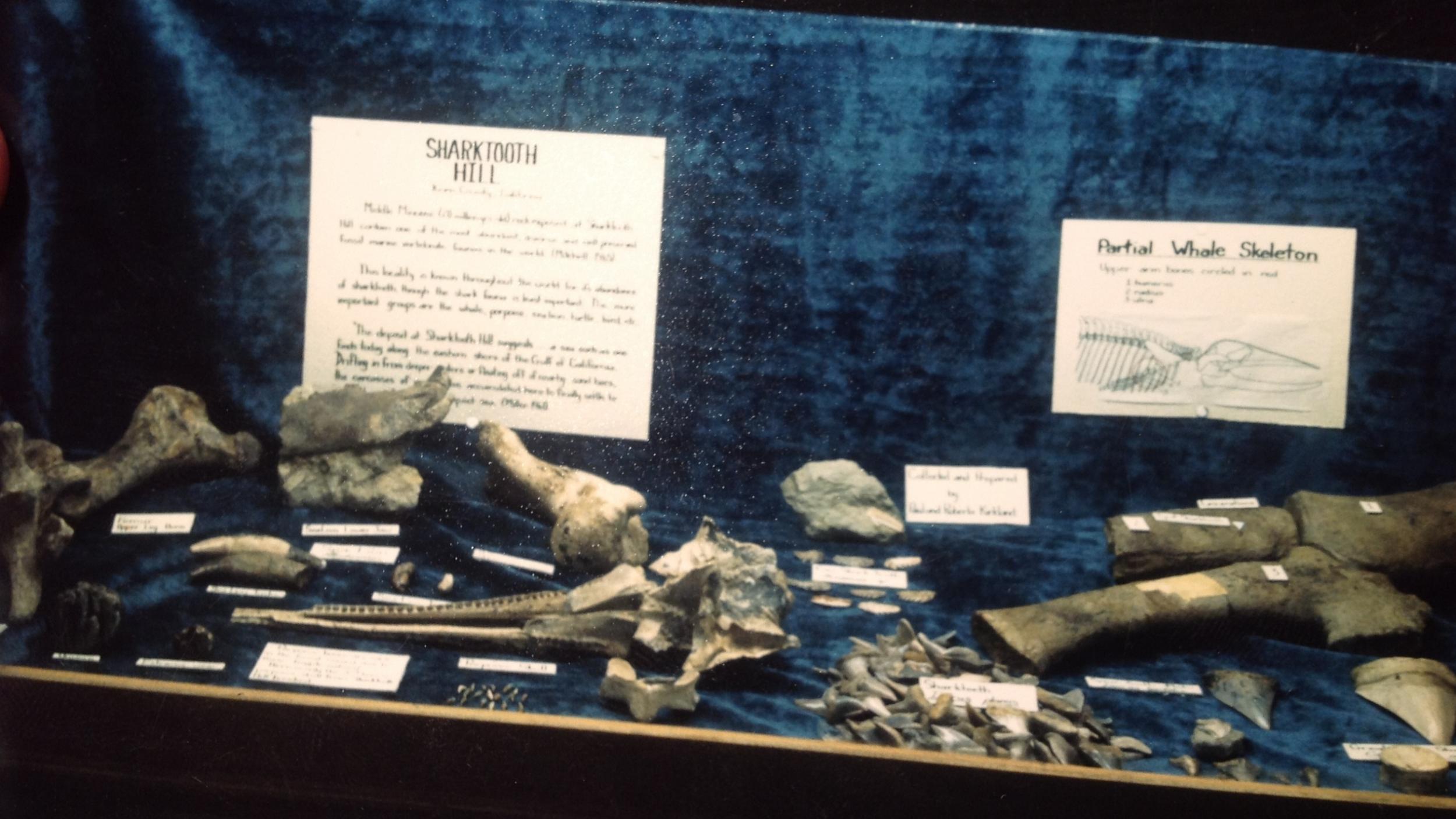 |
|
|
|
Post by elosha11 on Feb 19, 2017 22:28:05 GMT 5
From the January 2017 publication of Megalodon feeding on a 5 meter cetacean and 5 meter pinniped. This is the study I've been discussing on the specific thread regarding this study and I'll post it there as well. Very good evidence of Meg feeding, and beautiful imaging and grouping. However as I've stated, I don't believe it supports the conclusions drawn by the research based on such a sparse sampling and ignoring marks of Megalodon feeding on much larger cetaceans. 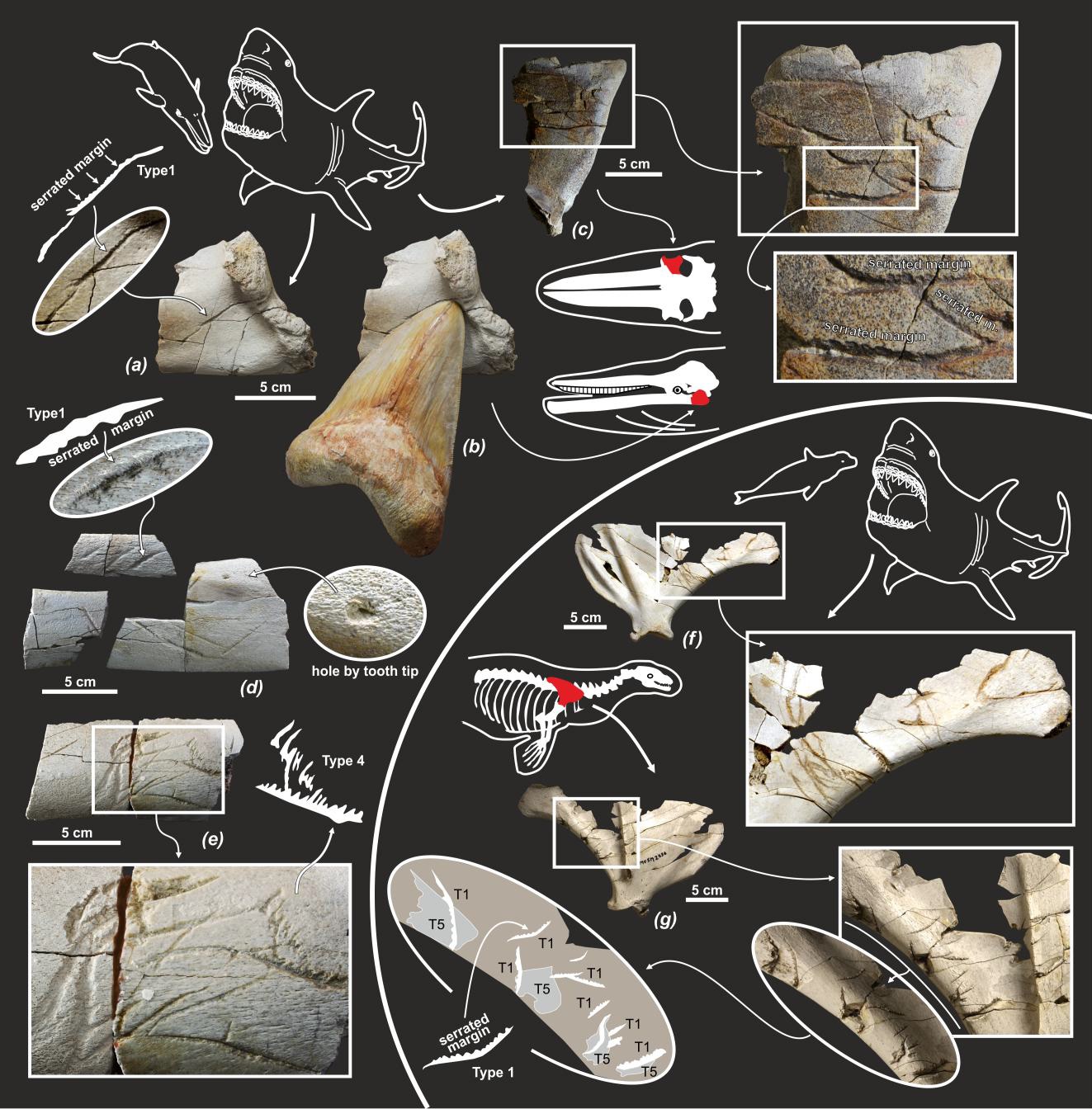 |
|
|
|
Post by elosha11 on Sept 14, 2017 4:14:36 GMT 5
|
|
|
|
Post by elosha11 on Sept 15, 2017 6:20:46 GMT 5
Here's some great photos shared by Life in the Meg v. Livyatan thread. Really shows the incredible damage Meg could do to a whale. Here's Life's quote: [Life:] Ok, time for some visual observations:- Whale vertebra bitten in half: 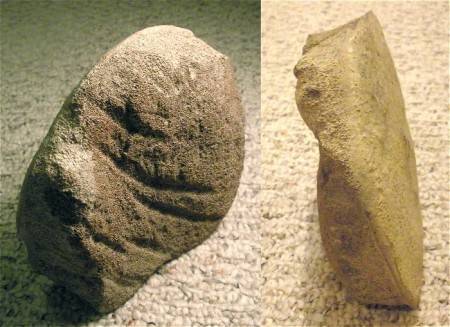 Whale bone with 3 inch deep gash:  Whale rib bone segment with puncture like gashes: 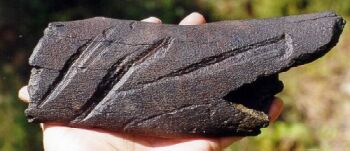 Another puncture like wound:  --- Large (unknown taxon) whale killed by Megalodon?  Bite wounds on same whale:  --- Also, I shall make this clear that Megalodon inflicted wounds have been observed in all bodily regions of whales. Some attacking strategies have been figured out by experts; Most commonly attacked/bitten regions are: - Ribs (rib-cage) - Vertebra (spine and caudal) - Flippers |
|
|
|
Post by elosha11 on Sept 25, 2017 0:53:43 GMT 5
Description of alleged sperm whale fossil from paleodirect website. www.paleodirect.com/wh027-fossil-whale-vertebra-megalodon-shark-bites/ID odontocete FOUND St. Mary's River Basin, Georgia, U.S.A. AGE MIOCENE / PLIOCENE: 22 - 4.5 million years SIZE 10" across x 7.75" high x 8" deep CONDITION NO REPAIR OR RESTORATION. LAB CLEANED, SEALED AND STABILIZED NOTE SUPER RARE THIS COMPLETE, OF THIS SIZE, AND IN THIS LEVEL OF PRESERVATION. DRAMATIC BITE MARKS FROM A MEGALODON SHARK!   |
|
|
|
Post by elosha11 on Oct 5, 2017 18:27:18 GMT 5
Here's the picture of what's described as a type of large bowhead whale flipper with large shark bites marks, presumbably Megalodon. From NG's Prehistoric Predators series.  This picture is from Dr. Robert Purdy's well regarded and cited 1996 research paper on Megalodon findings off the Atlantic coast.  |
|
|
|
Post by elosha11 on Oct 20, 2017 0:32:05 GMT 5
|
|
|
|
Post by Infinity Blade on Oct 20, 2017 17:58:45 GMT 5
It bit the teeth? Judging from the size and thickness of the teeth, I'm assuming this was not a raptorial sperm whale (à la Livyatan), but rather one like the modern one. Obviously the bite of O. megalodon>>>>>>the bite of a non raptorial sperm whale, so if they were really locking jaws I assume this ended badly for the cetacean.
|
|
|
|
Post by elosha11 on Oct 20, 2017 19:53:45 GMT 5
^Correct, this would not have been a Livyatan which has much larger teeth. However, a 8.25 inch sperm whale tooth does suggest a very large bull sperm whale. The largest reported teeth today are around 7-8 inches, so this one exceeds it. It may suggest a bull sperm whale of 60 feet or longer, which would be a larger whale than the Livyatan holotype.
What this does show - if these are truly Meg bite marks - is that during Meg's existence sperm whales also reached roughly the same size as sperm whales in modern times. So Megalodon may have been contending/interacting with several formidable species of similar size, both sperm whales and Livyatan.
Of course, what this fossil can't tell us is whether this was a predation, predation attempt, territorial dispute, a brief and non-life threatening conflict, or simply a scavenging event. Unlike the few fossils bones that show signs of healing from a presumed Meg predation attempt (thus showing the animal was alive when bitten) a damaged tooth doesn't heal (as far as I know). I will say, with caution, that there appear to be other very large sperm whale fossil bones that bear the mark of Meg bites. Some of which are in this thread. Still, there's really no way to tell if bite marks on sperm whale bones were a scavenging or a predatory event.
I agree with you that for a sperm whale, even a large one like this, locking jaws with a Meg would be very bad considering the relatively gracile lower jaw of the whale and lack of upper jaw teeth. However, we can't discount the possibility that the "locked jaw" scenario was preceded by the animals ramming each other. Given the massive size of a bull sperm whale's head, that would be a real risk for a Meg, even a huge one. Of course the risk would be great for the sperm whale as well. I also note that it doesn't seem to be the preferred strategy of modern sharks (or practically any apex predator) to charge directly into the face of a large and formidable prey target. But who knows? The possibilities are certainly intriguing.
So all I can say with some degree of confidence is that the body of evidence is more strongly seeming to support the idea that very large sperm whales co-existed with Megalodon and that the shark interacted with them in some sort of presumed feeding event.
|
|
|
|
Post by Life on Oct 20, 2017 20:46:26 GMT 5
Excellent find elosha11A paleontologist should buy it and write an article about it. We cannot rule out the possibility of a fight between a Megalodon and that physeterid. Recall Sharkzilla program. It is based on the remains of a prehistoric baleen whale whose skull was entirely missing (i.e. chomped off by a Megalodon). Here it is: www.discovery.com/tv-shows/shark-week/videos/could-megalodon-chomp-a-whaleThat physeterid might have met its end in similar fashion. |
|
|
|
Post by elosha11 on Oct 20, 2017 21:02:27 GMT 5
Thanks Life. Yes, it is a very interesting fossil. Unfortunately, it's already been bought, and most likely by a private collector rather than a paleontologist. Paleodirect.com seems to have one of the best mix of reputable and expensive fossil collections out there, so whenever they post a whale fossil with Megalodon bite marks, it is immediately snapped up. This tooth and the previous sperm whale vertebrae with bite marks were bought by the time I found them online.
I definitely don't rule out the possibility of a fight or the "lock jaw" scenario. It could have happened like that. I'd simply think it more likely that if a Megalodon killed this large bull sperm whale, the more likely scenario would be an attack from the side or to the tail/flippers followed by feeding behavior, in which case, it may have bitten the whale's jaw and caused the damage to the tooth. Those are the more evidentiary-established Meg attack patterns. I definitely believe Meg could attack the head and decapitate a whale such as the one in Sharkzilla, but keep in mind that the Sharkzilla whale was around 25 feet long, and this sperm whale's tooth suggest a very large bull, maybe 60 or more feet long. While I would definitely favor a large Meg against this large and formidable sperm whale, we simply don't know for sure if it was a predatory event, and if so, how it played out. It sure is fun to contemplate however!
|
|
|
|
Post by Life on Oct 20, 2017 21:59:01 GMT 5
It is debatable how Megalodon approached its prey because you will find examples of its bite marks on virtually every kind of bone.
Nonetheless, a number of trophic interactions suggest an assault on the rib cage and/or skull. Even a juvenile assaulted a balaenopterid in the manner that the victim's rib cage features dental imprint. This is a pattern. I believe that a large Megalodon could afford to assault its prey from virtually any angle.
I am not in the position to speculate about the species of that physeterid unfortunately but I would advice caution in identification of a prehistoric cetacean (unless confirmed in a scientific piece) because majority of the extant cetaceans are relatively recent (Pleistocene occurrences?) and did not co-exist with Megalodon.
|
|
|
|
Post by elosha11 on Oct 24, 2017 21:10:30 GMT 5
Life, You raise a good point about not knowing for sure if this tooth is from the ancestor and/or same species as the modern day sperm whale. As we all know, there are many extinct biting sperm whales, but I don't know of any that would have teeth this big, except Livyatan, and this tooth is almost certainly not a Livyatan tooth. The 7 meter Brygmophyseter holotype, for example, I've heard had 5.5 inch teeth. I suppose if Brygmo really got much bigger, as has been speculated, it could have teeth this large. I do note that the 8.25 inch tooth I posted does closely resemble modern sperm whale teeth. I also note that sperm whales similar to today's sperm whales (i.e. deep diving, squid preying variety) have been thought to exist for many millions of years and may well have overlapped with Megalodon. Here's an article reporting a 40 foot 10-12 million fossil sperm whale recently discovered in California. The article does seem to imply that the fossil whale was built quite similarly to modern day sperm whales, but perhaps smaller overall. In particular, a large portion of the lower mandible and teeth were recovered and it appears to have looked quite similar to modern day sperm whales. Here's the article and picture showing what parts of the skeleton were recovered. www.latimes.com/local/lanow/tn-dpt-me-0622-whale-fossil-20160620-story.html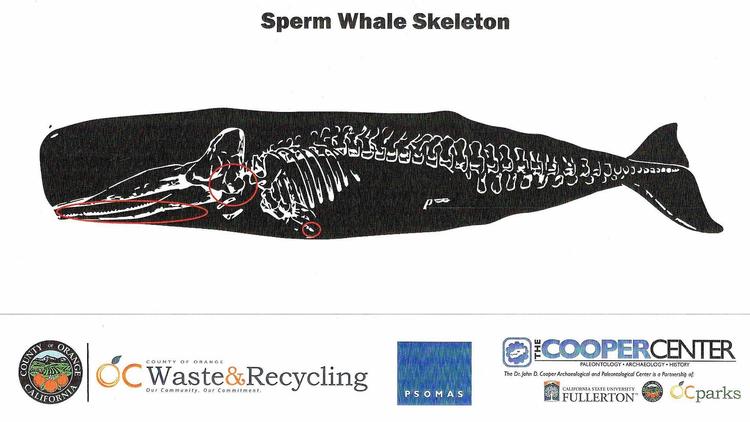 |
|
|
|
Post by Infinity Blade on Oct 24, 2017 22:33:59 GMT 5
^Correct, this would not have been a Livyatan which has much larger teeth. However, a 8.25 inch sperm whale tooth does suggest a very large bull sperm whale. The largest reported teeth today are around 7-8 inches, so this one exceeds it. It may suggest a bull sperm whale of 60 feet or longer, which would be a larger whale than the Livyatan holotype. What this does show - if these are truly Meg bite marks - is that during Meg's existence sperm whales also reached roughly the same size as sperm whales in modern times. So Megalodon may have been contending/interacting with several formidable species of similar size, both sperm whales and Livyatan. Of course, what this fossil can't tell us is whether this was a predation, predation attempt, territorial dispute, a brief and non-life threatening conflict, or simply a scavenging event. Unlike the few fossils bones that show signs of healing from a presumed Meg predation attempt (thus showing the animal was alive when bitten) a damaged tooth doesn't heal (as far as I know). I will say, with caution, that there appear to be other very large sperm whale fossil bones that bear the mark of Meg bites. Some of which are in this thread. Still, there's really no way to tell if bite marks on sperm whale bones were a scavenging or a predatory event. I agree with you that for a sperm whale, even a large one like this, locking jaws with a Meg would be very bad considering the relatively gracile lower jaw of the whale and lack of upper jaw teeth. However, we can't discount the possibility that the "locked jaw" scenario was preceded by the animals ramming each other. Given the massive size of a bull sperm whale's head, that would be a real risk for a Meg, even a huge one. Of course the risk would be great for the sperm whale as well. I also note that it doesn't seem to be the preferred strategy of modern sharks (or practically any apex predator) to charge directly into the face of a large and formidable prey target. But who knows? The possibilities are certainly intriguing. So all I can say with some degree of confidence is that the body of evidence is more strongly seeming to support the idea that very large sperm whales co-existed with Megalodon and that the shark interacted with them in some sort of presumed feeding event. Assuming this was a real fight (as correctly pointed out, it may not have been one at all), I suppose it's possible this was initially a "ramming first" scenario, but I'm not entirely sure if that scenario is very likely. You're right that this was something a Megalodon would have to watch out for (I wouldn't be surprised if a head-on ram could break its jaw; certainly it would knock out teeth). But I also agree with you that the sperm whale puts itself in danger as well. If the whale was swimming towards the shark literally head on to ram it (which would logically lead to face-to-face jaw locking, as possibly indicated by the actual fossil), the soft tissue junk, the spermaceti organ, and the maxillonasalis muscle can all get severely lacerated or have 7 inch(?) serrated teeth embedded deep in them. Under the same principles, this is why punching someone in the mouth is a terrible idea (I know a sperm whale's head and a Megalodon's teeth are very different from a human fist and human teeth, respectively, but this is just meant to give you somewhat of an analogy). I don't think a sperm whale would take that risk. |
|
|
|
Post by Life on Oct 26, 2017 17:21:20 GMT 5
Good find elosha11I think that discovery needs a paper. @ausar Jaw-locking (and head-on collision) sound unlikely to me. I think that the Megalodon was aiming to kill the whale swiftly by chomping on its skull. |
|